Stand still and close your eyes in the Chicago Botanic Garden’s Dixon Prairie on a warm day in August and you’ll likely hear the hum of countless bees and the chirping of crickets and other insects. You may notice the wind rustle the leaves of tall switchgrass or the sharp “chip” calls of migrating birds as they search for seeds on coneflowers and coreopsis.
The Dixon Prairie is a wonderful 15-acre re-creation of six distinct prairie ecosystems that once spanned thousands of acres across Illinois and other midwestern states. If you haven’t strolled through this part of the Garden, late summer is a good time to do so. There are more than 250 species of native plants on this open, rolling landscape. Many of the tall, late-blooming perennials are an important nectar source for our native pollinators.
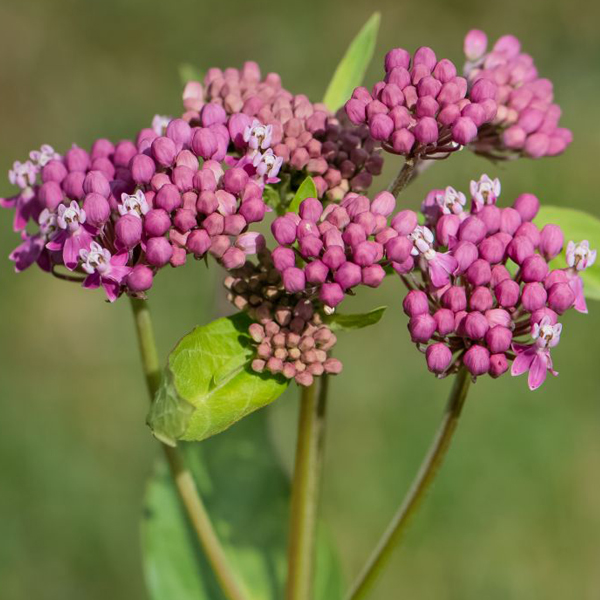
Here are just a few prairie plants that would make delightful companions for sun-loving perennials in the home garden.
Swamp Milkweed (Asclepias incarnata)
By late July, swamp milkweed is in its glory and the cinnamon-scented pink flowers last a month or more. The flowers attract nectar-seeking bumblebees and honeybees, as well as several butterflies, including swallowtails, greater fritillaries, and skippers. A desirable, well-behaved plant, swamp milkweed favors wetland habitats, but will grow in any good garden soil. This perennial wildflower ranges from 2 to 6 feet tall depending on conditions. In dry sites, the plants tend to be shorter and more compact. Female monarch butterflies lay their eggs on the underside of the leaves.
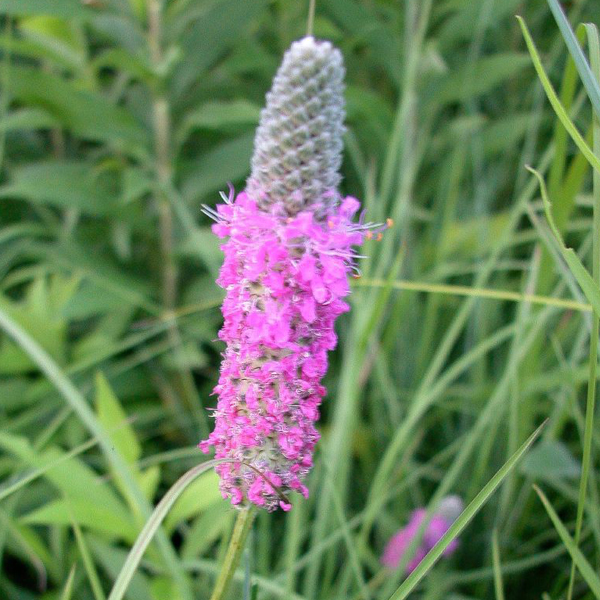
Purple Prairie Clover (Dalea purpurea)
This unusual native perennial grows to a height of 3 feet when planted in full sun. It’s not fussy about soil conditions—purple prairie clover tolerates sand, clay, gravel, or loam. You won’t need to fertilize, because the plant adds nitrogen to the soil. The showy purple flowers attract butterflies, honeybees, bumblebees, and several other pollinators from May through August. It’s a good companion for daisy-shaped flowers, such as pale purple coneflower (Echinacea pallida) and Rudbeckia.
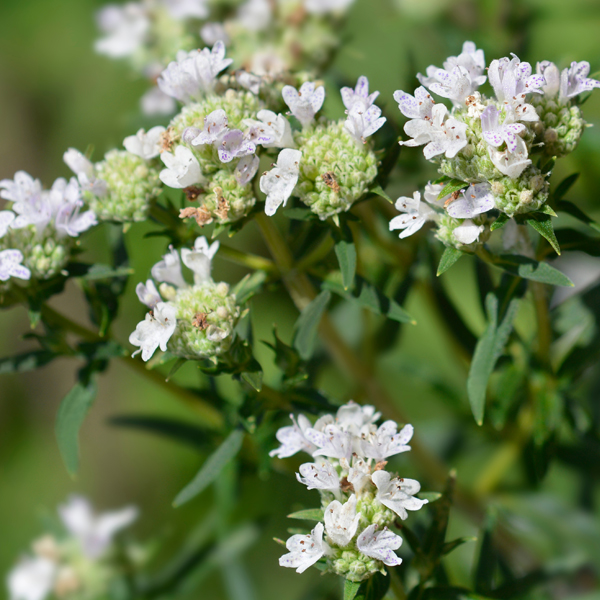
Common Mountain Mint (Pycnanthemum virginianum)
Mountain mint is widely distributed throughout Illinois and is not usually found in mountainous habitats—so the common name is a bit misleading. Clusters of cheery white flowers cover plants that are 2 to 3 feet tall. Plant it in a spot that receives full to partial sun and has average to moist soil and it will flower from July into August. Pearl crescent butterflies and cuckoo bees are just a few of the many nectar-seeking insects that visit the blossoms. When crushed, the leaves emit a minty fragrance, which makes the plants unpalatable to many insects, deer, and rabbits.
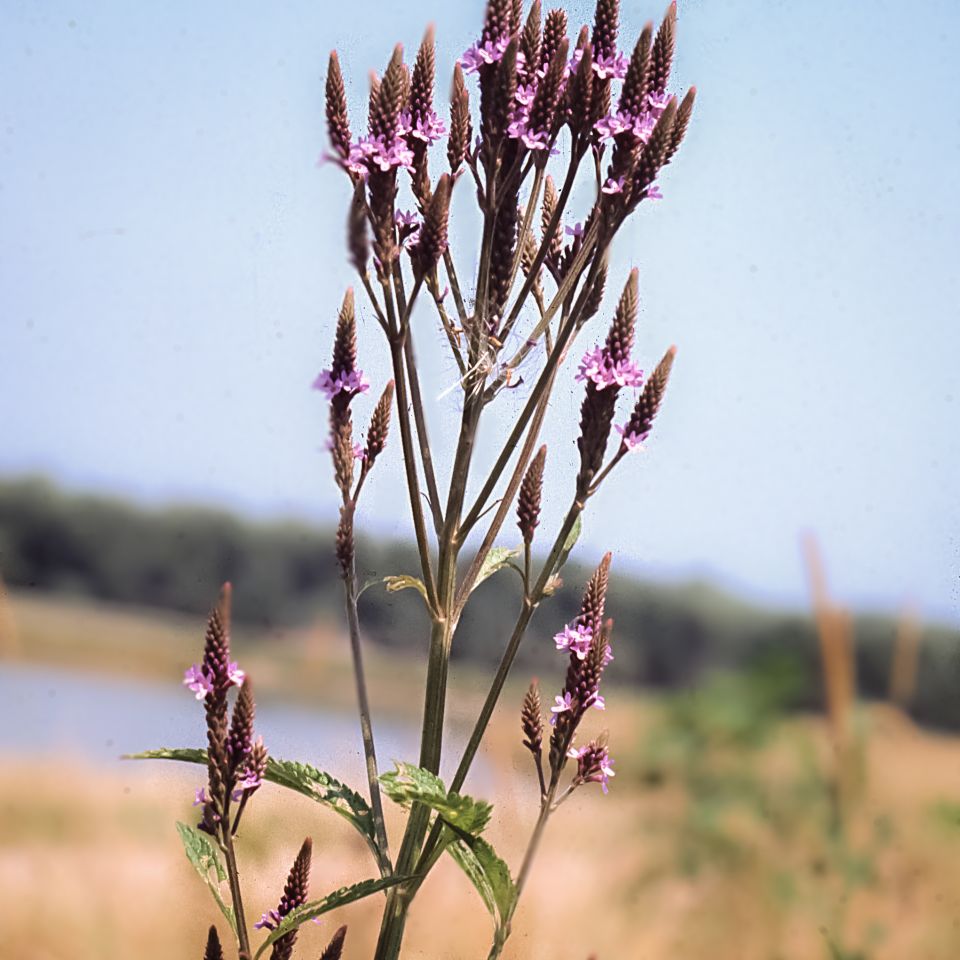
Blue Vervain (Verbena hastata)
The showy blue-violet flowers on this native perennial attract many types of bees, small butterflies, and moths when it is in bloom for about six weeks in late summer. In full sun and dry to moist soil, it can reach 2 to 5 feet in height. It grows throughout Illinois and is found in river-bottom prairies, moist meadows, and floodplains. Because it tolerates standing water for short periods, it makes a nice addition to a rain garden.
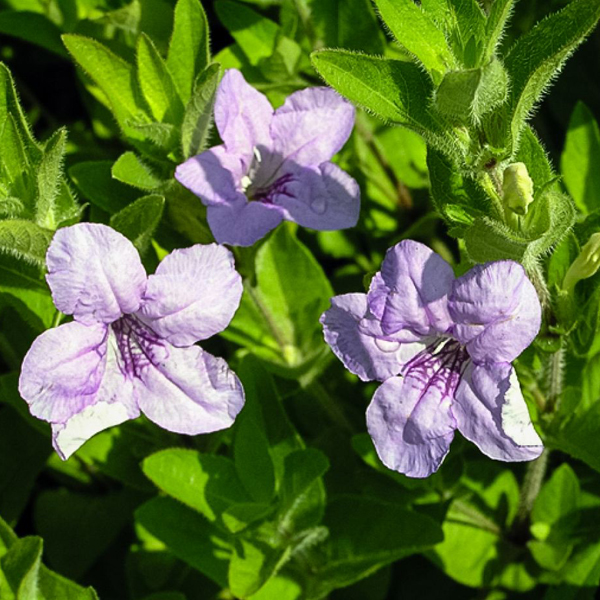
Hairy Wild Petunia (Ruellia humilis)
This attractive native petunia is not particular about growing conditions. It tolerates full or partial sun, moist to dry conditions, and just about any type of soil. Plants reach a height of 1 to 2 feet. Large, abundant flowers make it suitable for borders and rock gardens. Although the flowers typically open in the morning and fall off by evening, wild petunia blooms from early to late summer.
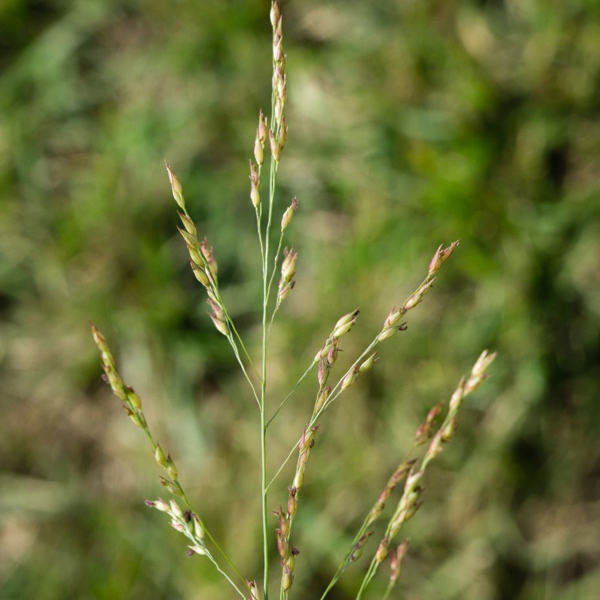
Switchgrass (Panicum virgatum)
This lovely prairie grass produces delicate panicles of pale pink-purple flowers on plants that can reach 6 feet or more in height. Although it does best in full sun and moist conditions, it tolerates dry soil. When plants are left standing in winter, birds are attracted to the seedheads for food. Dallas Blues switchgrass (Panicum virgatum 'Dallas Blues') is a cultivar with powder-blue leaves that become a russet-gold color in autumn.
Nina Koziol is a garden writer and horticulturist who lives and gardens in Palos Park, Illinois.

